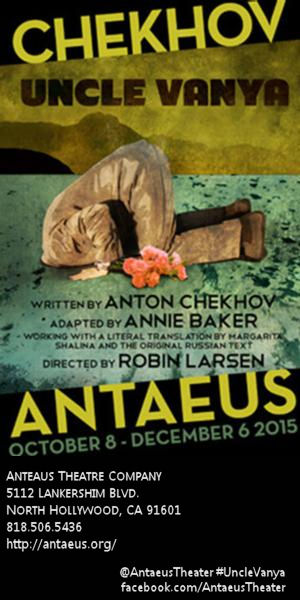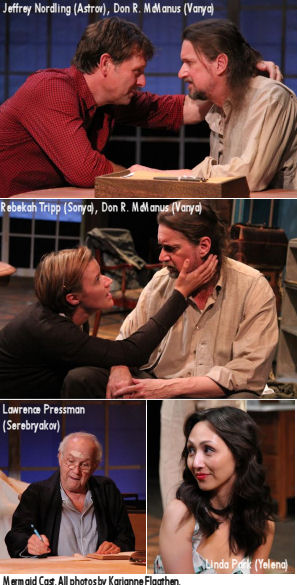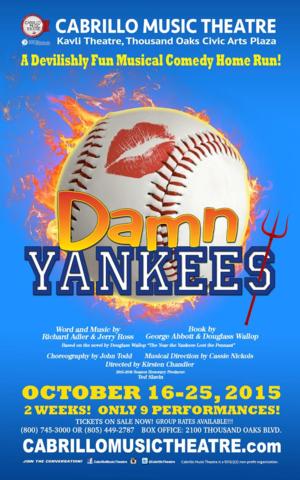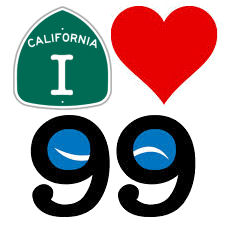
 I first saw the musical Urinetown back in 2004 at the Wilshire Theatre (now called the Saban Theatre). This was one of the first reviews I had written (I started my Livejournal back in February 2004, and this was May), and it was relatively terse. My opinion about the show then was: “Ignore the bad name, and go see Urinetown while you can. It is one of the funniest musicals I’ve seen in ages, with obvious parodies of other musicals, great acting, and one of the most satirical and sardonic books I’ve seen in ages.” The good news is that, over 10 years later, the musical still holds the humor it held then. In the student-acted, faculty-directed production I saw last night at CSUN, the acting help up very well, despite the plethora of minor technical glitches.
I first saw the musical Urinetown back in 2004 at the Wilshire Theatre (now called the Saban Theatre). This was one of the first reviews I had written (I started my Livejournal back in February 2004, and this was May), and it was relatively terse. My opinion about the show then was: “Ignore the bad name, and go see Urinetown while you can. It is one of the funniest musicals I’ve seen in ages, with obvious parodies of other musicals, great acting, and one of the most satirical and sardonic books I’ve seen in ages.” The good news is that, over 10 years later, the musical still holds the humor it held then. In the student-acted, faculty-directed production I saw last night at CSUN, the acting help up very well, despite the plethora of minor technical glitches.
For those that are unfamiliar with “Urinetown: The Musical” (Book by Greg Kotis (FB), Music by Mark Hollmann, and Lyrics by Mark Hollmann and Greg Kotis (FB)), you can find a detailed synopsis on the Wikipedia page. I won’t repeat all the details; here’s the executive summary: The central conceit of the show is that the world has been living over 20 years with a horrible drought. The situation has gotten so bad that a private company, “Urine Good Company”, has engineered the situation to make it illegal to urinate or defecate in anything other than a public amenity. No private toilets. No peeing in the bushes. The amenities are not free: you must pay to pee. If you break the law, you get sent to the mythicial Urinetown … a place to which people go but never return from.
Our main characters in the show are Caldwell B. Cladwell who owns and operates UGC; his daughter Hope; Penelope Pennywise, who operates Public Amenity #9; Bobby Strong, her assistant custodian; Officer Lockstop, who enforces the law and narrates the story; and Little Sally, a street urchin. The story starts at the public amenity, and after the initial exposition, we see Bobby Strong’s father get sent to Urinetown for peeing in the bushes because he didn’t have the fee, and Bobby refused to give it to him. An encounter with Hope encourages Bobby to listen to his heart and rebel. He opens the urinal for all to pee free. There is a battle with UGC, and Bobby and the people take Hope hostage, while UGC and the cops cannot capture them due to incredibly slow choreography. The rebels want to kill the girl, but they are convinced to keep her alive for leverage. Cladwell offers to meet with Bobby and attempts to bribe him, but Bobby refuses and is sent to Urinetown. Little Sally hears Bobby’s last words and tells the rebels and Hope. Hope goes on to lead the rebels to victory. They open all the urinals and get rid of the fee, but the water runs out and Hope eventually meets the same fate as her father. The world is revealed to be Urinetown. Oh, and the river is in you.
There are a lot of ways to look at this story. The surface story is a commentary on megacorporations as a power for good in the word — or, in reality, an opportunity for unchecked greed. As such, this become an allegory on rich vs. poor, and how the way in which the rich treat the poor can lead to rebellion. But it also points out that the poor may not be able to govern in a far-sighted way, and that short term reward is no substitute for long-term planning.
Yes, I guess it could mean that.
But to me, this musical tells a different story. It tells the same type of story that was later told by shows like “Drowsy Chaperone“, “[title of show]” and the currently running “Something Rotten“. Urinetown is (to me) a commentary on the theatrical form: its structure, its conventions, and the common theatrical tropes that evoke memories of other shows. This is consistent throughout Urinetown through the self-awareness that it is, indeed, a stage musical bound by illogical stage conventions (such as incredibly slow choreography, or the limitations of the ensemble size). It is also consistent through the references and parodies of other shows, such as the bottle dance at the top of Act II, the pastiche of West Side Story gang movements, the Les Misérables style mobs, the sudden choral numbers, the interjection of gospel, and the continual catchphrase of “Whaaaaat”?
But this type of show is not for everyone. You have to be open to its type of humor. You need to be able to suspend disbelief in the non-sensical plot, and just let the parody wash over you like a warm and golden shower. Oh, right, too soon.
This production of Urinetown was a product of the Mike Curb College of Arts, Media, and Communication (FB) at CSUN’s Theatre Arts Department. This means this was primarily a student production, with faculty direction. This production was directed by Kari Hayter (FB), who has directed numerous musicals production that we have seen at The Chance Theatre (FB) in Anaheim. She has also worked with students both as CSU Fullerton and CSU Northridge (CSUN, if you hadn’t figured it out already). In fact, she directed the excellent Drowsy Chaperone that we saw on the VPAC (FB) stage earlier this year. I’ve commented many times that I sometimes have trouble seeing the contribution of the director, but here there were glimpses of how she molded the students into actors. This was evident heavily in the pre-show, where the actors wandered onto stage in costumes and just kept doing little activities in character. It was evident in the early-audience policing of cell-phones by Officers Lockstock and Barrel. It was also evident in the behavior of those characters in the background. Hayter (FB) also was a co-choreographer with Christopher M. Albrecht (FB), and the two worked together to provide good movement across the stage. Urinetown is actually a production that benefits a little from overacting and over-stylized movements; both serve to amplify the comedy in this case. Hayter and Albrecht recognized this and clearly worked with the cast to bring it out.
The cast itself was excellent, especially considering that this was a student cast. I’d like to single out Jessamyn Arnstein (FB)’s Little Sally for special notice. I’ve seen Jessamyn before in both Bat Boy and Drowsy; she was just a knockout here. Strong voice (even with the technical problems), strong performance, strong dance, strong interactions, strong characterization. She took what was clearly a fun satirical role and ran with it. Brava!
Also worthy of special highlight was Daniel Bellusci (FB)’s Cladwell B. Cladwell. We also saw Bellusci in Drowsy as the Man in Chair (when I noted he was the product of Nobel Middle School in the years after my daughter matriculated from that fine institution). Bellusci had an evil aura that was perfect for the role, and had a surprisingly strong singing voice. Again, he got the mannerisms and characterizations down pat (and reminded me of another Nobel actor, Quest Zeidler, all grown up). A great example of this was Cladwell’s “Don’t Be The Bunny” number.
Dahlia Yablon (FB) ‘s Hope Cladwell had just the right sense of spunk and verve for the role, and she had a lovely high singing voice that brought something special to their songs. Yablon spends much of the second act tied to a chair with a gag on her mouth, yet still succeeds in successfully singing and dancing.
John Bernos (FB)’s Bobby Strong was unfortunately plagued with a microphone that kept going in and out, and kept producing a load of static. He clearly had a great voice, but needed the extra amplification in a room of that size. His performance was strong (and continued in the vein of strong performances — we also saw him in Drowsy), and he captured the gung-ho nature of the character well. He played off of Yablon’s Hope very well, as demonstrated in the number “Follow Your Heart”, but also showed great comic timing in “Run Freedom Run”.
One of the first characters we meet is Robert Collins/FB‘s Officer Lockstock. He captured the tone of the character just right, but needed just a tad more strength in the voice to bring out the satire. But that’s really a minor quibble; I enjoyed his performance quite a bit. I discovered writing this up that Collins was Coalhouse Walker Jr. in a 2013 CSUN production of Ragtime. This shows he had the strength in the voice; my conclusion (therefore) is that he needed a bit more amplification. My only question regarding Collins is one of casting intent. Both Collin’s Officer Lockstock and Robert Stroud/FB‘s Officer Barrel were black, and most of the other cast and ensemble (except for two ensemble members) were white or white-ish. I didn’t know if this was a conscious decision of the director to make a commentary on all the recent police interactions between black and white, or if there was some other message. In the end, I decided that to think about that question was to overthink the question. I opted to accept the performance for what they were: very good, and fun. I’ll note that Lockstock is one of the those roles that actually benefits from a bit of overplay, and I think Collins captured that overplay very well and had fun with the role. I loved his opening speech before the show started, but he needs to remind people not just to not take videos, but to turn off the devices during a show (in fact, to turn off anything that emits light).
The last of the major roles was Valerie Gould/FB‘s Penelope Pennywise. As she did with Mrs. Tottendale in Drowsy, Gould plays older comedy well. She had great over exaggerated mannerisms (in the manner of Three Penny Opera) and style, and played the humor very well. She also handled her one major number, “It’s a Privilege to Pee”, with aplomb. This number had a number of very high notes and odd timing; it was great to see her nail it.
As for the remainder of the cast, who had smaller named and ensemble roles, there are a few worthy of special note. Sarah Kline (FB)’s Josephine Strong shines in her few highlighted moments, and has a great singing voice. Matthew Kesner/FB was appropriately menacing when he was leading the mob in “Snuff That Girl”. Robert Stroud/FB‘s Officer Barrel was a nice contrast to Collins’ Lockstock (almost in a Kenan and Kel fashion). Rounding out the smaller roles and ensemble were: Lance Amann/FB [Mr. McQueen], William Goldstein/FB [Senator Fipp]; Robert Murray/FB [Old Man Strong], Josh Cooper/FB [Tiny Tom]; Kate Graham/FB [Little Becky Two Shoes], Ethan Barker/FB [Robby the Stockfish], Elliott Maynes/FB [Billy Boy Bill]; Lulu Mack/FB [Mrs. Millennium], Nia Bernstine (FB) [Ensemble], Hyungwoo Jang/FB [Ensemble], JayCee Porter/FB [Ensemble], Darian Ramirez/FB [Ensemble], Cade Stedman (FB) [Ensemble], and Jin Villanueva (FB) [Ensemble].
Music was provided by the Urinetown Town Band, under the direction of David Aks (FB). The band consisted of Leon Thomasian (FB) on Piano, Isaac Green (FB) on Bass, Joe Martone (FB) on Drums and Percussion, Sean Harrison (FB) on Saxophones and Clarinets, and Ryan Ruder/FB on Trombone and Euphonium. The band had a real good sound; this was especially noticeable if you hang around for the playout after the bows — the band is just smoking and having fun with the music.
Finally, we turn to the technical and production aspects. This is where this show had the most difficulties; but on the upside, it is also an area that is easy to correct. The scenic design by Christopher Scott Murillo (FB), assisted by Ilana Molina/FB, was mostly a series of scaffolds and structures, with a few drop down signs to suggest locations. The big problem was that the back door of the stage was open, esposing the backstage area. This was never used or incorporated into the design, and so served to distract. At minimum (i.e., if the door could not be closed), put a backdrop over it during the show. Another problematic area was sound, which was designed by Kenji Kang/FB, assisted by Sierra McDuffee/FB. Here the problem was less design, and more technical: the mics were extremely staticky, and kept going in and out during the production. Part of the sound designer’s job is to teach the actors how to move without creating mic problems, and where to place the mic for best effect. Those are the two areas that need to be reexamined. Other than that, the sound was good — especially the background noises in the pre-opening. For the most part, the lighting design of Glen Howes/FB, assisted by Josh Legget/FB, worked well to establish the mood. I particularly liked the use of uplighting to create menace. However, the follow-spot requires a bit more work, as often it played catchup with the actors. The last of the problem areas related to the costumes designed by Paula Higgins (FB), assisted by Diego Arias/FB. Again, the problem wasn’t in the costumes themselves (which were fine), but in the execution. In this case, it was execution with respect to the ensemble’s quick changes: one actor came back in an early scene with the blouse puffing out of the zipper in the back of her skirt; in another ensemble number, a police officers blouse was visible through her unzipped zipper. These are distractions that just didn’t need to be there. One positive credit goes to the Prop Masters, Taylor Anderson/FB and Eric White/FB for engineering quite a few clever props, including the bunny slippers and the Bobby Strong Memorial Mannekin used in Act II. Other significant technical/production credits (there are far too many to list and link all the crew members, supervisors, operators, etc.): Scott McKim/FB [Technical Director], Meg Imamoto (FB) [Production Manager], Corey Sorenson (FB) [Vocal Coach], Jihee Jenny Park/FB [Stage Manager]; Beth Kalish/FB [House Manager], Ah-Jeong Kim [Department Chair/Producer].
Urinetown: The Musical continues at CSUN through November 8, 2015. Tickets and information are available at (818) 677-2488. They are also available online ($20) through Ticketmaster and other outlets. They are not on Goldstar.
Ob. Disclaimer: I am not a trained theatre critic; I am, however, a regular theatre audience member. I’ve been attending live theatre in Los Angeles since 1972; I’ve been writing up my thoughts on theatre (and the shows I see) since 2004. I do not have theatre training (I’m a computer security specialist), but have learned a lot about theatre over my many years of attending theatre and talking to talented professionals. I pay for all my tickets unless otherwise noted. I am not compensated by anyone for doing these writeups in any way, shape, or form. I subscribe at three theatres: REP East (FB), The Colony Theatre (FB), and Cabrillo Music Theatre (FB). Through my theatre attendance I have made friends with cast, crew, and producers, but I do strive to not let those relationships color my writing (with one exception: when writing up children’s production, I focus on the positive — one gains nothing except bad karma by raking a child over the coals). I believe in telling you about the shows I see to help you form your opinion; it is up to you to determine the weight you give my writeups.
Upcoming Shows: Sunday sees us out in Simi Valley for “The Addams Family” at the Simi Cultural Arts Center (Simi Actors Rep Theatre (FB)). The following weekend sees us back in Simi for the Nottingham Festival (FB) on November 7. We then go out to Perris for “A Day Out with Thomas” at Orange Empire Railway Museum (FB) on November 11 (I can’t skip seeing my buddy Thomas and his friend Percy). The following week brings Deathtrap at REP East (FB) on November 14. The weekend before Thanksgiving I’m on my own. I picked up a postcard for “Timeshare” at Eclectic Theatre Company (FB) while at the Colony for Best of Enemies, and it sounded so interesting I booked a ticket for November 21. The last weekend of November is currently open. December brings “El Grande Circus de Coca-Cola” at The Colony Theatre (FB) the first weekend, followed by a mid-week stint as a producer, when we present The Nigerian Spam Scam Scam as the dinner entertainment at the Annual Computer Security Applications Conference (ACSAC). December also has dates held for “The Bridges of Madison County” at the Ahmanson Theatre (FB) and “If/Then” at the Pantages (FB). As always, I’m keeping my eyes open for interesting productions mentioned on sites such as Bitter-Lemons, and Musicals in LA, as well as productions I see on Goldstar, LA Stage Tix, Plays411.
 Boo!
Boo!


 I first saw the musical Urinetown
I first saw the musical Urinetown  Many people say that LA has no history, but here are some recent articles touching upon LA history:
Many people say that LA has no history, but here are some recent articles touching upon LA history:
 Until last night, the only
Until last night, the only 
 No, this isn’t a nudge for you to install Windows 10. Rather, it is a reminder that I’m collecting all Windows 10 articles that are of interest to me in my post: “
No, this isn’t a nudge for you to install Windows 10. Rather, it is a reminder that I’m collecting all Windows 10 articles that are of interest to me in my post: “ This has been the second very busy week in a row. I’ve accumulated a number of articles, but there are no coherent things, but lots of things I want to comment upon. So let’s get started with this news chum collection:
This has been the second very busy week in a row. I’ve accumulated a number of articles, but there are no coherent things, but lots of things I want to comment upon. So let’s get started with this news chum collection:
 You gotta have skin.
You gotta have skin.